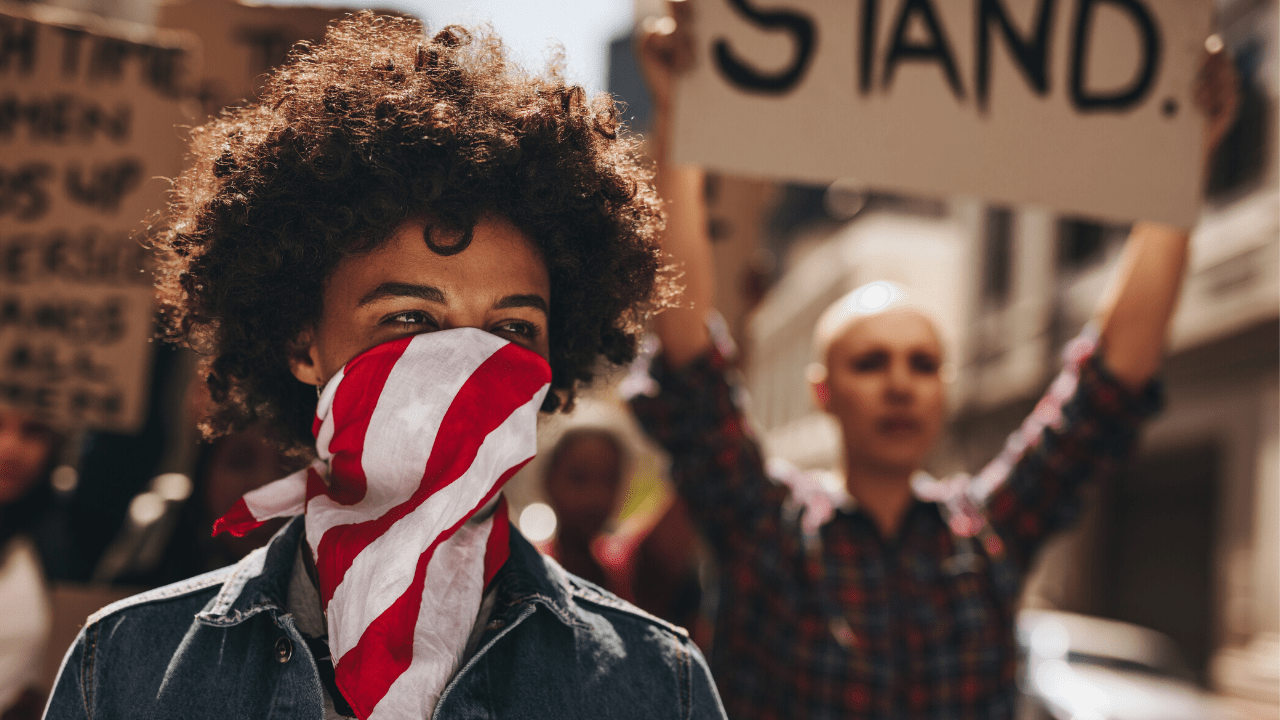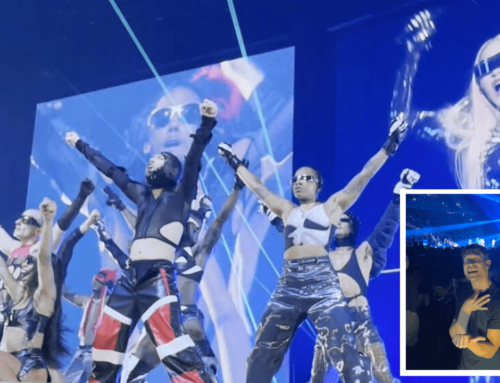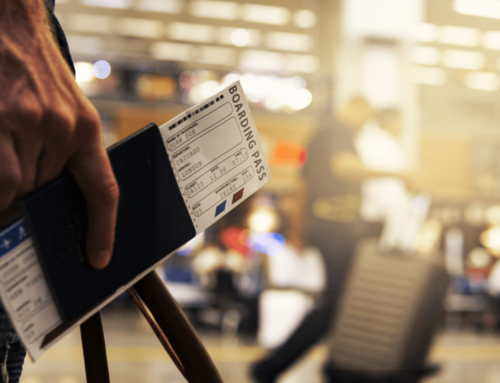George Floyd’s killing in June set off massive protests and demonstrations across the globe. A month later, our nation celebrated the 30th anniversary of the Americans with Disabilities Act (ADA). Part of celebrating is recognizing why it’s vital to have peaceful and accessible assembly: Overnight, social justice advocates, and community organizers had to rapidly scale major Black Lives Matter (BLM) events for millions of people – including activists with disabilities.
Lack of lead time is why participating is a hit or miss within multiple Deaf Communities, which is often snubbed, or told interpreter requests require two weeks’ notice.
Yet without social movements, it’s unlikely we’d even have the ADA at all. Today’s deaf and hard of hearing people fought for and have earned certain rights due to historic protests, including the 504 Sit-In (120 disability activists in 25-day sit-in to enforce the Rehabilitation Act of 1973), the Americans Disabled for Accessible Public Transit (ADAPT) movement, which lasted seven years, and the Deaf President Now protest, spanning eight days in 1988.
Activism requires both forethought and flexibility – in-person and digitally
Deaffriendly’s Community Outreach Manager Socorro Garcia shared with us what it was like to be a deaf participant in BLM rallies: stressful when interpreters are not provided, or when separated and left behind if they’re placed in a car along with community organizers. Then there are other variables: “On sunny (and hot) days, it can be tiresome and even irritating to keep my eyes on the interpreters constantly even with the sun in my eyes.”
The uncomfortable nature of protest (which includes lengthy sit-ins, lock-outs, speeches, police, marches, and bad weather) means that despite organizers’ best intentions, accessibility often is an afterthought. Planning ahead is just as important for marches as in classrooms, auditoriums, and indoor venues.
In addition to the right to accessible goods and services as customers, Deaf, DeafBlind, DeafDisabled, hard of hearing, and late-deafened people, including Black, Indigenous and People of Color (BIPOC) also have a right to join social justice movements. The majority of social justice activists and organizers truly want to be deaf-friendly — but lack time, resources, and know-how. Luckily, there are many ways to learn.
Technology has given us many ways to be in solidarity with social justice movements at home, but many are not accessible. Many community organizers share solidarity events via un-captioned videos, said Garcia. “This only creates more barriers for me as a Deaf person on top of my trying to get accommodations in place for my participation in any rally or march.”
Social justice: not about being a business, but acting from ‘a place of community love’
The Americans with Disabilities Act lists detailed provisions for a variety of spaces like mom and pop businesses, corporations, healthcare facilities, and private and public schools. Many deaf-friendly businesses drive accessible, equitable outcomes simply by being prepared and aware: making a line-item budget for accessibility investments, or using accessibility tax credits (to hire deaf employees or interpreters).
But since social justice organizing often happens at a grassroots level, accessibility often is motivated by different, equally vital reasons. It’s not necessary for community organizers (which can be anyone and everyone) to operate more like a business. Rather, says Garcia, “they can come from a place of community love to ensure their members are participating equally to support the movement’s mission.”
The cost of hiring sign language interpreters is a common expense many organizers run into. Accessibility can be accomplished through quick short-term crowdsourced funds via Venmo, or “any app that people can transfer money to support not just accessibility but the cost of presenters, venues, and so forth.”
In New Hampshire, one deaf activist even set out to create a separate, accessible protest – starting a GoFundMe to cover interpreting expenses as well as other essentials like water, snacks, and a protest banner.
If able to plan far ahead, organizers can consider long-term accessibility funding sources like city or state grants. Other accessibility solutions simply require organizers to get creative – such as downloading free (or low-cost) captioning apps for videos.
Disability justice: inseparable from human rights
Time and time again, history shows why it’s so vital for Deaf, DeafBlind, DeafDisabled, hard of hearing, and late-deafened community members to gather in safe, accessible space, using their own language, in solidarity for humanization practices.
Circumstances of George Floyd’s death are undeniably linked to disability rights. In a 2016 study by the Ruderman Family Foundation, researchers estimated that up to one-half of the people killed in the United States by police had a disability.
In the Deaf Community, there’s no denying the intersectionality of race and disability. “By referring to the ‘Deaf Community,’ this automatically refers to a white-centric Deaf Community,” says Garcia. With the majority of U.S. Deaf-owned businesses being led by white entrepreneurs, it is more important now than ever to unpack privileges and forge more intersectional alliances to increase BIPOC empowerment within the Deaf Ecosystem.
Social justice organizers: Are you eager to learn how to host an incredible event that moves progress forward? We’ve created a free resource on how to make your social justice movements more accessible to Deaf, DeafBlind, DeafDisabled, hard of hearing, and late-deafened individuals.
Download our FREE tips to learn how to create a more welcoming and deaf-friendly social movement.
DOWNLOAD: Tips – Social Organizers [English]
DOWNLOAD: Tips – Social Organizers [Spanish]






